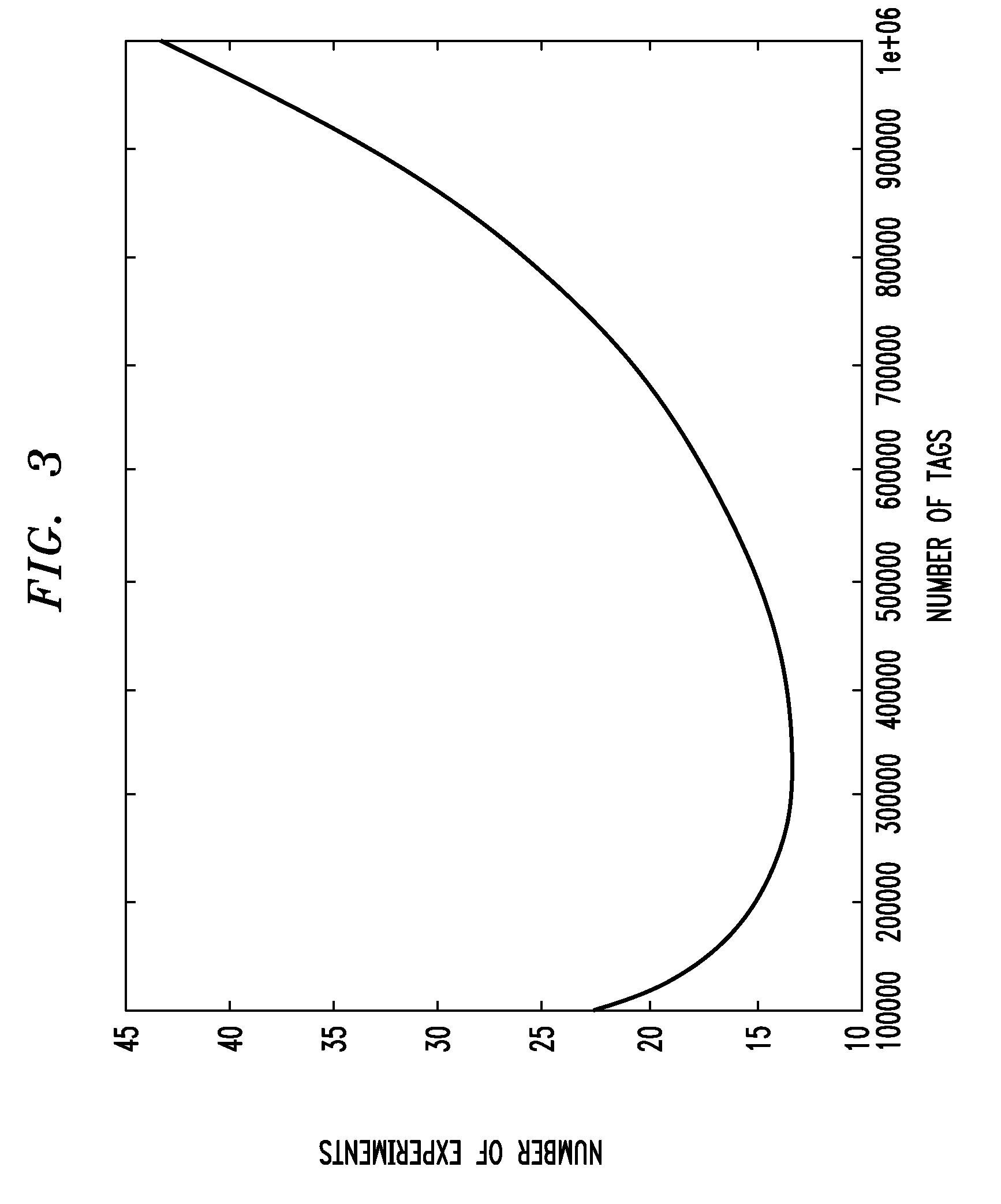Anonymous tracking using a set of wireless devices
a wireless device and anonymous tracking technology, applied in the field of anonymous tracking using a set of wireless devices, can solve the problems of long time, difficult to count the number of all tags in the system in a short period of time, and efforts that have not been fully endorsed by the industry, so as to improve the operating range of an ezb estimator, reduce the total estimation time, and improve the effect of accuracy
- Summary
- Abstract
- Description
- Claims
- Application Information
AI Technical Summary
Benefits of technology
Problems solved by technology
Method used
Image
Examples
Embodiment Construction
[0024]An RFID-tag and system model, in one embodiment of the invention, will now be introduced. Considering a large field of RFID tags and a set of readers, the set of readers could imply multiple readers reading the field at the same time, or alternatively, a single reader sequentially querying the field at different points in space and / or time, or a combination of both. Such a system adopts a “listen-before-talk” model for the RFID tags, wherein the tags “listen” to the reader's request before they “talk” back. In this scenario, even though tags may have their own unique identifiers, it is not of interest to identify tags uniquely.
[0025]The range of a reader is defined by the set of RFID tags that are capable of transmitting back to the reader. This is because the reader's transmission radius is assumed to be far greater than a tag's transmission radius, and yet, the reader's usefulness is determined only by the number of tags that it can read.
[0026]In a basic ALOHA scheme, as ful...
PUM
 Login to View More
Login to View More Abstract
Description
Claims
Application Information
 Login to View More
Login to View More - R&D
- Intellectual Property
- Life Sciences
- Materials
- Tech Scout
- Unparalleled Data Quality
- Higher Quality Content
- 60% Fewer Hallucinations
Browse by: Latest US Patents, China's latest patents, Technical Efficacy Thesaurus, Application Domain, Technology Topic, Popular Technical Reports.
© 2025 PatSnap. All rights reserved.Legal|Privacy policy|Modern Slavery Act Transparency Statement|Sitemap|About US| Contact US: help@patsnap.com



